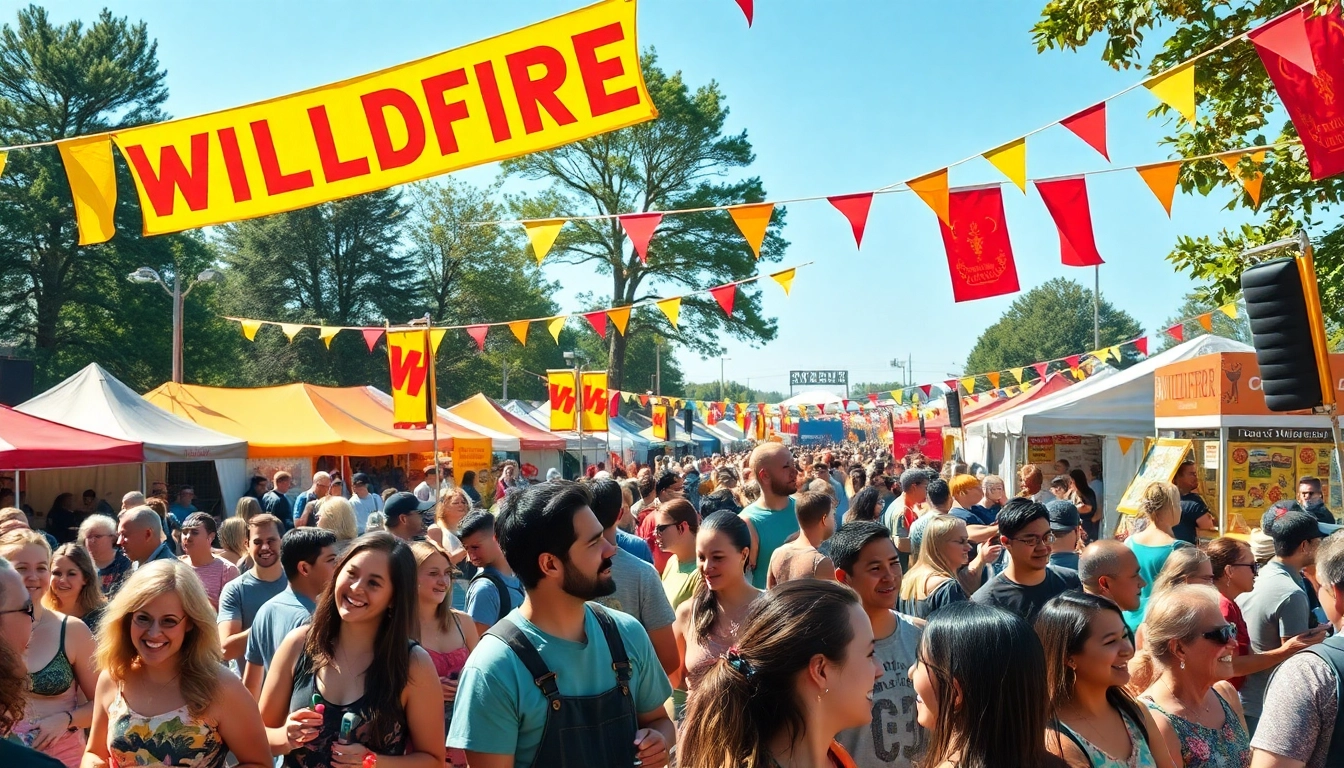
Introduction to Wildfire Events
Wildfire events have become a significant concern in various parts of the world, particularly as ecosystems and human habitation overlap more than ever before. Understanding the nuances of these events is crucial for both prevention and management. In this comprehensive guide, we will delve into various aspects of wildfire events, including their definitions, historical context, causes, impacts, and best practices for preparedness. As you navigate through this vast subject, you will see the importance of awareness and preparedness in mitigating the risk associated with wildfire events.
Definition of Wildfire Events
Wildfire events, often referred to as wildfires, forest fires, or bushfires, encompass uncontrolled fires that spread rapidly through vegetation, thereby affecting landscapes, wildlife, and human settlements. These fires may occur in natural environments, such as forests and grasslands, as well as transformed landscapes, like agricultural or suburban areas. The intensity and spread of wildfires can vary based on a multitude of factors, including weather conditions, fuel availability, and topography.
Historical Context and Trends in Wildfire Incidents
The history of wildfires can be traced back centuries, with significant events recorded throughout various cultures. However, recent years have witnessed an alarming increase in wildfire incidents, particularly in regions like California, Australia, and the Mediterranean. According to the National Interagency Fire Center, the number of acres consumed by wildfires in the U.S. has steadily risen over the past few decades, highlighting the stark reality of our changing climate. Increased temperatures and prolonged droughts due to climate change have exacerbated these incidents, creating an urgent need for enhanced fire management practices.
Importance of Awareness and Preparedness
Awareness and preparedness are critical in addressing the wildfire crisis. Individuals, communities, and policymakers must prioritize understanding the risks associated with wildfires, as well as actionable steps for prevention and response. Engaging in community education programs that inform about fire risks, preventive measures, and emergency planning plays a vital role in empowering individuals to take proactive steps against wildfires.
Causes and Contributing Factors of Wildfire Events
Natural Causes: Weather and Climate
Natural causes play a pivotal role in the development of wildfires. Weather conditions, including heatwaves, low humidity, and strong winds, can create an ideal environment for wildfires to ignite and spread. Lightning strikes are a common natural ignition source, triggering wildfires in remote areas. Drought conditions further enhance the risk; as soil moisture diminishes, vegetation becomes more flammable, making it easier for fires to ignite and spread uncontrollably.
Human Activities and Fire Management Policies
Human activities also significantly contribute to wildfire events. These include campfires that are not properly extinguished, discarded cigarettes, equipment use, and agricultural burning. Furthermore, land management policies and practices have been scrutinized for their role in wildfire prevalence. For example, fire suppression policies implemented in the past aimed to extinguish all wildfires have led to the accumulation of excess fuel, which can result in more intense future wildfires. Modern approaches focus on allowing controlled burns to clear out unnecessary underbrush and create firebreaks.
The Role of Vegetation and Ecosystem Health
The health and type of vegetation in an area are significant factors influencing wildfire behavior. Ecosystems that are overly dense, either due to a lack of fire management or changes in land use, can serve as tinderboxes waiting to ignite. Some types of vegetation, such as oily or resinous plants, can significantly increase fire intensity. A healthy ecosystem with diverse plant life tends to be more resilient to wildfires, highlighting the importance of maintaining ecosystem balance through responsible land and forest management.
Impacts of Wildfire Events on the Environment
Ecological Consequences and Forest Recovery
Wildfire events have profound ecological consequences, some detrimental and others beneficial. While wildfires can destroy habitats, disrupt delicate ecosystems, and threaten biodiversity, they can also promote new growth and regenerate ecosystems adapted to fire. Certain plant species have evolved to depend on fire for reproduction, such as the sequoia, whose seeds require the heat of a fire to trigger germination. Recovery after a wildfire can be a long process; ecosystems require time to heal, and the speed of recovery depends on the severity of the fire and existing soil and vegetation conditions.
Effects on Air Quality and Public Health
Wildfires release large amounts of particulate matter and harmful chemicals into the atmosphere, adversely impacting air quality. Smoke from wildfires can lead to respiratory issues, cardiovascular problems, and other health complications for individuals both nearby and far away, as smoke can travel hundreds of miles. Vulnerable populations, such as children, the elderly, and those with pre-existing health conditions, are particularly at risk. Public health organizations routinely monitor air quality during wildfire events to issue advisories and prevent adverse health outcomes.
Societal and Economic Repercussions
The societal and economic impacts of wildfire events are far-reaching. Communities may face displacement due to mandatory evacuations, and the cost of firefighting efforts, property loss, and recovery can be staggering. According to a 2020 study, the economic impact of wildfires in the United States alone accounted for millions in losses annually. Wildfires can also affect local economies reliant on tourism or agriculture, leading to long-term financial challenges and a need for recovery planning to mitigate future risks.
How to Prepare for Wildfire Events
Creating a Fire-Resilient Home and Landscape
One of the most effective ways to protect yourself from wildfire events is creating a fire-resilient home and landscape. This can involve pruning trees, clearing vegetation, and using fire-resistant building materials for homes. Establishing a defensible space around properties—generally defined as a minimum of 30 feet—can significantly reduce the risk of homes igniting from flames or embers. Regular maintenance of gutters, roofs, and fences, coupled with landscaping choices that minimize fire spread, enhances your home’s resilience.
Community Preparedness and Educational Resources
Community preparedness is a crucial component in reducing wildfire risk. Hosting workshops that educate residents on fire-smart landscaping, evacuation routes, and emergency communication plans is essential. Local governments often collaborate with fire agencies and organizations to provide resources and training tailored to specific community needs. Engaging in community drills can enhance preparedness, ensuring that all residents know how to respond if a wildfire threatens their area.
Emergency Response Plans and Evacuation Strategies
Establishing a well-defined emergency response plan is vital for individual and community safety during a wildfire. Residents should have a clear understanding of evacuation routes and ensure that their families can communicate effectively during an emergency. Regular updates to emergency plans and public awareness campaigns can help strengthen a community’s response to wildfire events. Furthermore, establishing local alerts for wildfire warnings and emergency text notifications can help keep residents informed in critical situations.
Future Outlook: Managing Wildfire Events
Innovative Technologies and Prevention Strategies
The future of wildfire management will likely involve a combination of innovative technologies and strategies. For instance, satellite imagery and drone technology can be utilized in monitoring and detecting wildfires in their earliest stages, allowing for quicker response efforts. Data analytics can help forecast fire risks based on climate models and vegetation assessments, enabling better resource allocation for firefighting. Additionally, using controlled burns as a preventive measure will continue to play a critical role in forest management.
The Importance of Policy and Legislative Support
Effective policies and legislative support are necessary to provide the framework for managing wildfire risks. Laws that promote responsible land use, enforce strict regulations on fire management practices, and fund preventive measures can create a more comprehensive approach to wildfire management. Collaborating across state and federal levels ensures a cohesive response strategy, allowing resources to be shared and strategies implemented more effectively at all levels of government.
Community Engagement in Fire Management
Community engagement will be a driving force in the future management of wildfire events. By involving local communities in decision-making processes, authorities can tailor wildfire management strategies to fit specific regional needs. Volunteers can assist in fire management efforts, such as creating and maintaining firebreaks or providing educational resources to their neighbors. Grassroots movements also play a vital role in advocating for policy changes and funding to support wildfire prevention and response strategies.
In conclusion, understanding wildfire events requires a multidisciplinary approach that encompasses ecological, societal, and technological perspectives. Awareness, preparation, and innovative strategies are key to mitigating wildfire risks and ensuring community resilience in the face of increasing wildfire threats. By taking proactive steps today, we pave the way for safer, more sustainable environments tomorrow.







